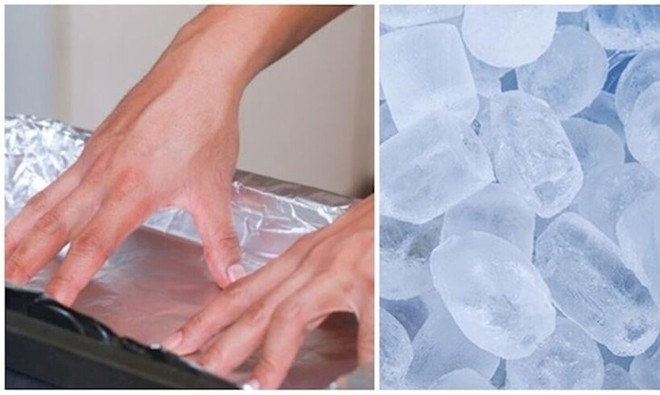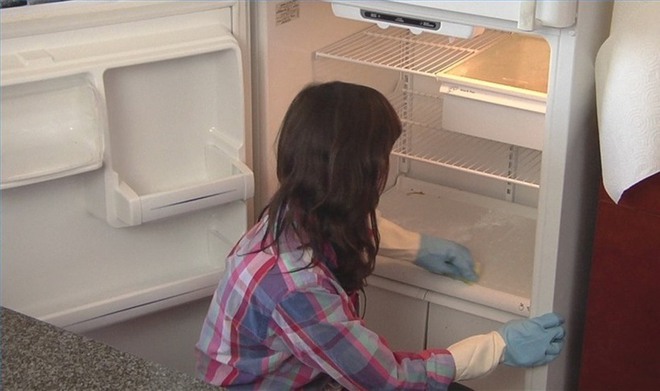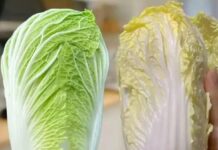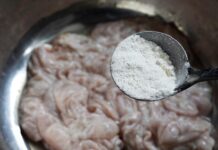Discover: Tips for Faster Ice-Making While Saving Energy
Here are some tips to help you make ice quickly while saving energy
Wrap the ice tray in aluminum foil: Aluminum foil is a good heat conductor, which speeds up ice-making. Cut a piece large enough to cover the ice tray, and place it on top before adding water. This will cause the water to freeze faster.

Wrapping the ice tray in aluminum foil creates colder temperatures, causing water to freeze faster. Illustration.
Use distilled water: Distilled water is free of impurities, which streamlines the ice-making process, causing it to freeze faster than regular water. You can use bottled distilled water or cooled boiled water to make ice.
Use a metal ice tray: Metal ice trays conduct heat better than plastic ones, resulting in quicker freezing. However, avoid overfilling metal ice trays as the expanding ice may crack them.
Place the ice tray in a well-ventilated area: Avoid placing the ice tray against the refrigerator wall or near other foods, as this obstructs cold air circulation, causing slower freezing. Instead, place the ice tray in the most spacious area of the freezer.
Break ice into smaller pieces before use: When using ice, break it into smaller cubes or chunks to save space and help it melt faster, reducing electricity wastage.
Use ice cubes: Opt for ice cubes instead of larger blocks to save space and promote faster melting. Ice cubes are also easier to remove from the tray.

Illustration: Keep the refrigerator door closed to prevent outside air from entering.
Regularly clean your refrigerator: Cleaning your refrigerator removes dust and bacteria, improving its efficiency and reducing energy consumption.
Avoid frequently opening the refrigerator door: Each time the door opens, the internal temperature rises, forcing the refrigerator to work harder to cool again. Therefore, limit opening the door and only do so when necessary.
Use an energy-efficient refrigerator: Modern refrigerators feature energy-saving functions that reduce power consumption. Consider investing in one to lower your family&8217;s electricity costs.
Some notes on the ice-making process
Avoid overfilling the ice tray as the expanding ice may crack it.
Do not place a hot ice tray directly into the freezer as it can damage the refrigerator.
Use ice within two weeks to ensure quality and safety.






























